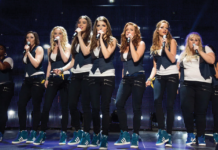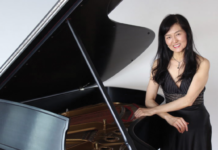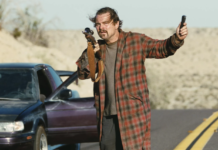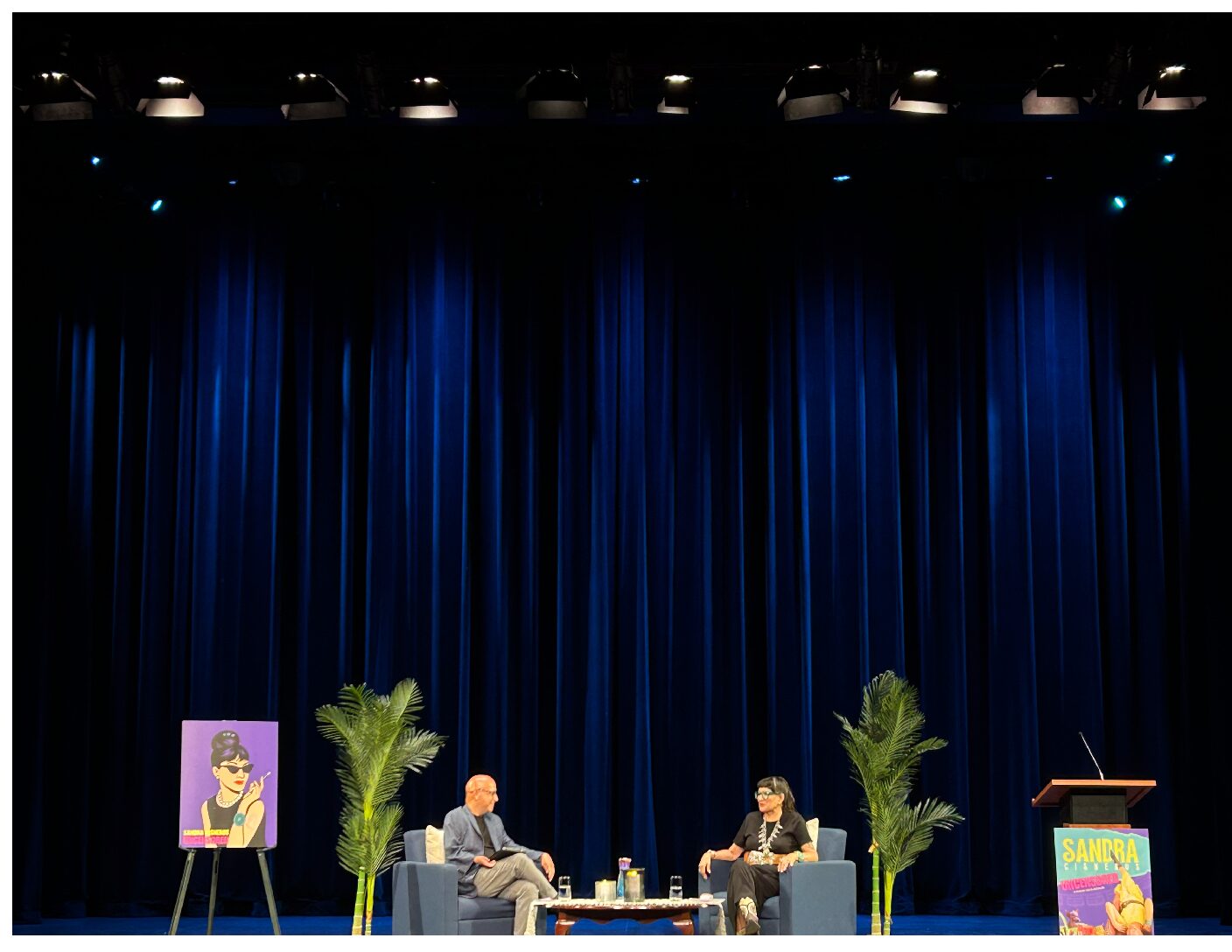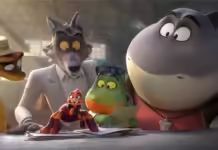*Spoiler Alert*
Directed by Henry Selick, “Coraline,” is riddled with easter eggs and hidden details from the first second to the very last second. Selick meant for everything in this movie to have meaning, stating in an interview that “here everything is art directed; nothing is random. Every blade of grass, every branch shape, needs to have style.”
Within the first four seconds of this film, the entire plot is revealed through the pattern on the wallpaper in the Other Mother’s (Teri Hatcher), or the Beldam’s, sewing room. Pictured on the wallpaper are two birds — a mother bird and her baby bird — positioned next to a white chrysanthemum flower, a notable symbol of death. The mother bird is clutching the baby bird with her claws and drinking the blood of the baby bird from the large cut across its neck. As the film is foreshadowed within the first few seconds, the audience is slyly shown that this “Coraline” is about a mother killing and eating her child.
In this same scene, at the very beginning of the movie when the Other Mother is creating a doll to look like Coraline (Dakota Fanning) out of an old doll of one of the ghost children, she is utilizing embalming tools and embalming techniques. The box of tools she places the doll in is an 18th century embalming kit coupled with a bone saw.
Just like it is portrayed on the doll, the first step of the embalming process is to cut the clothing straight off the back of the deceased. Previously stuffed with cotton, a material used in funeral directing, the doll was gutted and filled with sawdust, another material typically associated with embalming. After filling the doll with sawdust, the Other Mother sews the Coraline doll’s mouth shut, yet another part of the embalming process. Throughout her process of transforming the old doll into Coraline, the Other Mother is not just making a doll, she is preparing Coraline for her own funeral.
Because one of the ghost children (Aankha Neal, George Selick, Hannah Kaiser) said that the Other Mother “spies on our lives through the little button eyes,” the audience knows that the Other Mother is watching Coraline through the doll she made of her. However, there is another item in the film that has button eyes that the Other Mother uses to spy on Coraline. Located in both worlds, the squid toy with a single button eye, much like the doll, is regularly seen moving around on its own. In the other world, this squid is seen with cat ears while in the real world it has a triangle over the top of its head, and is the only toy, besides the doll, that is seen with button eyes. This has led many viewers to theorize that this squid was the Other Mother’s way of spying on Coraline in the long term. In fact, the squid from the other world with the cat ears is seen at the end of the movie after Coraline saved her parents, implying that the Other Mother is still watching Coraline after her escape.
When Coraline first comes to the other world, the Other Father (John Linnell) sings a welcome song to her. There is obvious symbolism in the lyrics with the Other Father referring to her as a “doll,”and making reference to the “button” eyes. However, there is a hidden easter egg in the chords the Other Father plays on the piano; everytime he says the word “Coraline,” he plays a chord progression of D, E, A, D. With the chords spelling out the word dead, it is implied that Coraline was in extreme danger the minute she entered the other world.
At the beginning of the movie, Coraline is seen unpacking a snow globe of a fountain with two bears from Coraline’s hometown and placing it on the mantelpiece of her fireplace; this same snow globe can be seen on the mantle in the other world.
The next time the mantle and snow globe are seen is in the other world, before it is revealed that the parents are trapped there. In this scene the audience can see Coraline’s parents inside the snow globe in place of the bears. Following this scene, Coraline finds out her parents were turned into a doll and she sees the snow globe in the real world looking like it had just been shaken.
Near the end of the movie, right before Coraline throws the cat (Keith David) at the Other Mother to escape, the parents are seen trapped in the snow globe. Coraline immediately grabs her parents and runs back to the real world, breaking the snow globe while in the tunnel. Upon her return home, the snow globe disappears from her bag. However, the snow globe in the real world is broken, dripping all over the floor. The bears, representing her trapped parents, are no longer trapped inside the snow globe. Upon their return, Coraline’s parents are covered in snow.
Coraline has another “blink and you miss it” easter egg that foreshadows her parents being trapped in the snow globe. Thinking she escaped the other world, Coraline sees her mother at the end of the tunnel between the two worlds; unaware that this was the Other Mother, she runs to embrace her. The Other Mother, in her cosplay as Coraline’s real mother, is covered in snow; this is unusual because the film takes place in the summer, implying that her parents are trapped in the snowglobe. Fun fact: the snow in the stop motion film was made using super glue and baking soda.
Even the food in this film holds symbolism. Coraline, during her first meal in the other world is presented with a cake that says “Welcome Home” on it. However, this cake features a double loop lowercase “o” on the word “home.” Based on graphology, the study of patterns in handwriting, a double loop in a lowercase letter “o” indicates that the writer is lying, implying that she is welcome, but not really home.
Compared to Coraline’s real father, the Other Father has a really weird relationship with food, and even said that he was “starving” during his first encounter with Coraline. Just like Coraline, the Other Father is a victim of the Other Mother since he is only fed or allowed to roam outside of his office when the Beldam needs him or when Coraline is around. The Beldam is never seen eating any food and her plate is always empty at meal time throughout the movie. The only time the Other Mother is seen eating is when she bites the head of a beetle near the end of the movie. This is because the Other Mother sustains herself by eating the flesh and souls of the children she lures to the other world.
Every time Coraline is around, the Other Father consumes glutinous amounts of food because he does not know when or if he will ever eat again. Even when Coraline rushes off to bed because she is afraid of the button eyes, the Other Father is disappointed, not because she did not sew buttons into her eyes, but because she went to bed “before dinner,” and he loses his chance to eat that night.
At the end of the movie, as Coraline scrambles through the tunnel between worlds attempting to escape the Other Mother, the tunnel is littered with multiple items lost by victims of the Beldam. The audience sees a familiar article of clothing that does not belong to any of the three ghost children. Instead this white and blue collar belongs to the “boring blue boy” depicted in the ice cream painting in both worlds, emphasizing just how far back her crimes extend.
There are so many more hidden symbols and little easter eggs in this stop motion masterpiece. Scout them out by watching “Coraline” and analyzing every little detail of this intricate film.



